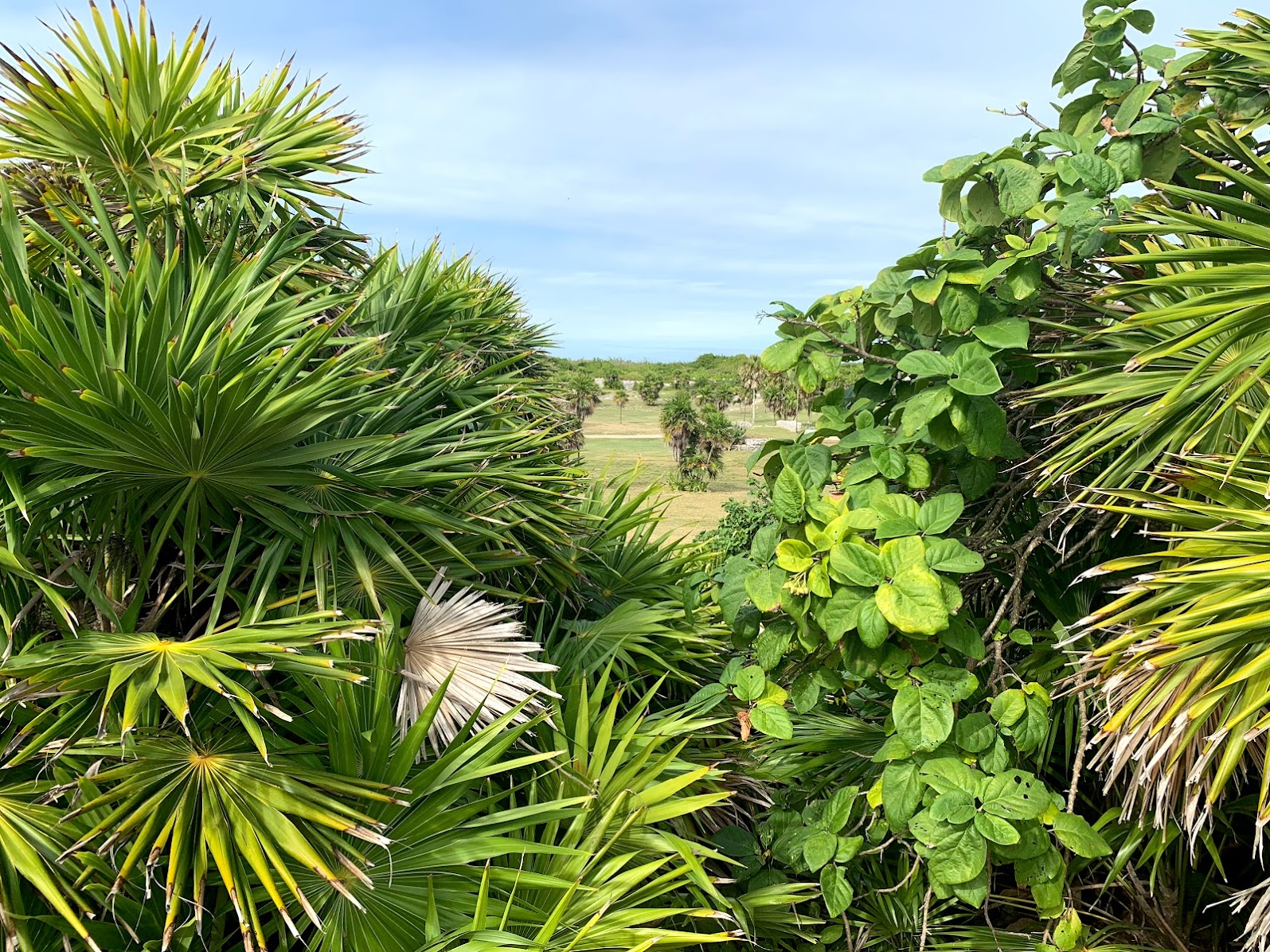this is a page for
Category: Destinations
Tulum is known for its yoga, tranquil beaches, eco-luxury waterfront bungalows, and an underlying ethereal magic that keeps luring visitors back. English signs telling you to “be yourself” and “embrace the mystery” pepper the one thin road to the ocean, where streets and buildings are draped by jungle. This is not Cancun – there are no rowdy resorts, just small boutique hotels, each with their own unique (but always bohemian) personality, carved around and into nature. So what happens when you throw in tens of thousands of tourists for a two-week electronic music festival?

Before tourists, Tulum is a city of about 20,00 inhabitants. And its tourist boom is relatively new. In the 1970s, Mexico set aside 25,000 acres of Tulum as a collective farm to provide underutilized land for the impoverished. Some of that leased land was sold to foreigners, who were charmed by Tulum’s pristine beaches and lush greenery. Backpackers flocked there in the 80s and 90s, and Tulum was still undeveloped. But in the 2000s, Tulum began to see a different kind of tourist – one that was willing to pay for finer amenities while still wanting to be immersed in nature. Thus, Tulum’s bohemian-chic/ eco-luxury boom was born. In a series of ambiguous land sales, boutique hotels and restaurants began popping up across the oceanfront, and Tulum became a haven for celebrities and their companions.
Fast-forward to 2019: some of the now-coveted land changed hands in forceful and abrupt property grabs, though Tulum’s reputation as an idyllic oasis remained intact. Tourists were mostly shielded from the disputes. Celebrities are now likely venturing to more private destinations, but are being exponentially replaced by Instagram influencers and the wealthy and eco-conscious. This growth would likely be more pronounced were it not for Tulum’s geographic inaccessibility – to get there, a person needs to fly into Cancun and take at minimum a 1.5-hour cab, bus, or shuttle ride before reaching the final destination. This inconvenience means that Tulum is largely self-selecting – only the people who deliberately seek it out venture there – and forces a rite of passage by way of a lengthy car ride, magnifying the aura of magic upon arrival.
It’s easy to see why Tulum draws in foreigners and Mexicans alike. The restaurants are largely open faced, with roofs but seldom with walls, the façade blending into trees that mingle with guests. The sand is meticulously cleaned. Turquoise water shimmers invitingly for miles. Cell service and WiFi is spotty the further you get into the jungle, impelling guests both by their self-selection and by force to just “be.”

The more Tulum becomes a bona fide scene, particularly during high season, the more infrastructure struggles to keep pace with the influx. The one highway from Cancun to Tulum accommodates all airport traffic, and once in town, there is still only one road taking visitors between Tulum proper and the beach. Other roads are privately owned. In order for Tulum to be sustainable, it needs water, sewage, and architecture that both meet the needs of budding tourism and preserve the environment that led to its tourism in the first place. None of this happens in a bubble.
And then there’s the festival. This year was only its second incarnation, with a large audience that signals further growth. It seemed to advertise mostly through word of mouth – googling “things to do in Tulum” doesn’t show any trace of the event. With the festival came not just thousands more visitors, but a new clientele. You still have wealthy eco-tourists and Instagram influencers, but those guests are then layered with wealthy party hoppers, the people who accompany them, and lovers of electronic music around the world. For two weeks, Tulum was the new Mykonos or Ibiza. An avant-garde Burning Man.
I’ve been to Tulum twice; once in mid-December in 2018, and the second time a few weeks later for the festival. While the enchantment of Tulum’s jungle and ocean felt the same throughout, it’s difficult to understate how much busier it became on the second visit. Pedestrians draped in bohemian-chic attire flooded the road along the beach (there were no sidewalks on that one street), hotels were booked, and taxis were stuck traversing a typically 7-minute ride for over a half-hour. As a tourist, it was busy but didn’t feel overcrowded, but I can only imagine the burden it placed on Tulum’s already limited resources. As the festival and tourism more broadly expands, so does the need for a solution to its rapid growth. Andrés Manuel López Obrador (AMLO), Mexico’s new president, proposed a railroad through the Yucatan – the peninsula holding Cancun, Playa del Carmen, and Tulum. This, however, only addresses the accessibility leg of Tulum’s problems, while putting wildlife at risk. With demand increased even further, how is a small city supposed to keep up?
Tulum’s magic has always been in the gaps – the light shining between the leaves of palm trees, or the wind drifting sporadically through sun rays as you lie on one of the luxury beach beds. Space for tranquility defines a trip here. The festival gives attendees a choice – they can spend every day for days on end, evening to sunrise, partying, or they can find a balance. Most people opt for the latter, but a surprising amount are able to subsist on hours if not minutes of sleep, seeing Tulum only through a DJ booth. The parties range from the most exclusive (you need thousands of dollars for a table, or to make friends with someone who bought one) to completely open, to villa parties hosted by tourists, expats, and locals. It creates an interesting dynamic – Tulum encourages relaxation and inclusivity, but if you’re trying to get into Solomun’s after party, the odds are better with fewer people in your posse.

The key thing to remember in Tulum is that you’ll have a good time no matter where you go. Our first night here, we went to dinner at one of the restaurants along the beach strip, RosaNegra, which turned into a raucous dance scene by the end of our meal. We were all delighted by the surprise and were given sparklers to commemorate the evening. The next night, my friends and I went to Solomun’s performance in Zamna, a venue in a desolate forest, and stayed well past sunrise. The stars sparkled above us throughout – nature still reigned supreme. In what felt like an act of divine serendipity, we ran into some other friends we met on our first Tulum trip in a concert of thousands, and we all danced together under the moon and the echo of electronic music. The exclusive parties are fun, but unless you’re paying to get in, the long lines and maneuvering deprive you of valuable sun time. Finagling your entrance is exhausting and can occupy the entire trip, if you let it. There are always other parties or other beach beds.
Whether it was the drapery of trees surrounding each boutique hotel or the limited paths paving the way for guests, Sound Tulum felt more intimate than I’d imagined for a festival. It was easy to make friends here. I was traveling solo my last three nights and met groups of people from all around the world who welcomed me into their circles. Germans, Italians, and even people from Australia traveled to Tulum for the celebration, and they all left before the 14th – the festival’s official end date. My last night, I ate some ceviche from the unbelievably delicious pop-up restaurant by my hostel and met three artists, one of whom was renting a villa along the beach. It was for sale, and they were seriously considering purchasing it and turning it into a creators’ retreat. Power for purpose. Nothing like that existed yet in Tulum, and a haven for artists would perfectly suit a town that came to prominence because of exquisite beauty and ethereal charms.

Like art, life is made meaningful by the negative space. A person needs time to savor and reflect, to think, to breathe, and to be present. With its deliberate seclusion and mesmerizing landscape, Tulum helps us get there. But we need to be deliberate too. It’s easy to get caught up in the party, the scene, or the money made by developing prized real estate, but getting smothered in superficial needs will only lead to an insatiable wanting – and destruction. Of environment, of relationships, of ourselves. What Tulum teaches us is that peace is invaluable and tenuous. It is nourished by wildlife, by creatures and humans alike, and that interconnectedness merits care. Ensuring sustainability in Tulum’s exponential growth will require commitments from partners across all industries. It will be difficult and complicated, but now we still have a choice – we can continue building, or find a balance.

